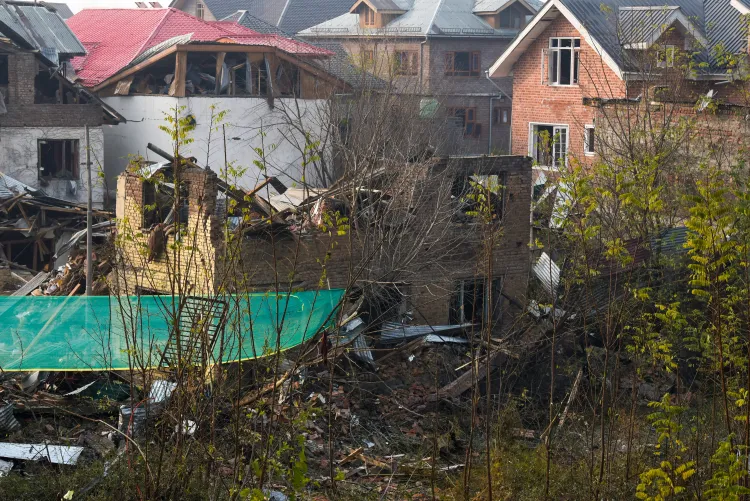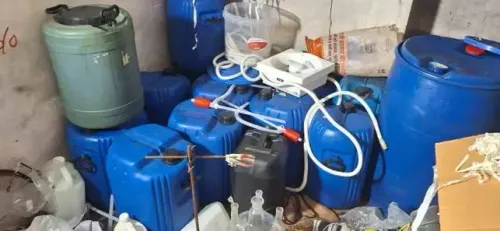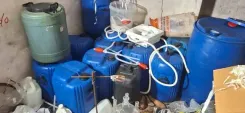What Did the J&K Blast Uncover About the Explosive Threat from the Faridabad Module?

Synopsis
Key Takeaways
- The explosion at the Nowgam police station was accidental.
- Investigations reveal the ammonium nitrate was unstable.
- Nine lives were lost due to the explosion.
- The Faridabad module had advanced plans for larger attacks.
- Heightened vigilance is necessary to prevent future incidents.
New Delhi, Nov 15 (NationPress) The authorities in Jammu and Kashmir have dispelled all doubts, asserting that the explosion at the police station was accidental. However, investigations are underway regarding the behavior of the ammonium nitrate that detonated unexpectedly.
Officials indicate that the ammonium nitrate had reached a dangerously volatile state, causing it to explode prior to the forensic teams' arrival to collect samples.
A powerful explosion occurred at the Nowgam police station in Jammu and Kashmir, resulting in the tragic loss of nine lives due to this accidental blast. Initial inquiries suggest that the explosion stemmed from the instability of the ammonium nitrate, which had been transformed into a high-grade explosive by the accused.
This batch of ammonium nitrate was confiscated during operations against the Faridabad module of Jaish-e-Mohammed. The explosion transpired while the chemical was being meticulously handled; however, its unstable nature led to the incident, according to officials.
The chemical had exceeded its stability threshold, resulting in its volatile condition. Officials explain that this particular batch of ammonium nitrate was primed for packing into an improvised explosive device (IED). The accused had mixed sensitizing agents and fuel while converting the ammonium nitrate into a potent explosive.
At this stage, the chemical was capable of releasing substantial energy without the need for a detonator. This suggests that the plot orchestrated by the Faridabad module was highly advanced. Had the module not been dismantled, a catastrophic event would have likely occurred.
Another official noted that the characteristics of the chemical clearly indicate its intended use in a large IED, such as vehicle-borne explosives. The module members were reportedly planning to transport the ammonium nitrate to Delhi and other urban centers.
Initially, it was believed that the Faridabad module aimed to execute attacks on December 6 or January 26. However, given the volatile nature of the seized chemical, their plans were likely set for an earlier date. The ammonium nitrate could have self-detonated if stored longer, officials warned.
Investigators suggest that the terror module members may have intended to utilize the ammonium nitrate in a vehicle. However, due to the nature of the chemicals, they could have simply stored it in crowded areas like parking lots or metro corridors.
A self-detonation would have created immense pressure and a large fireball, leading to numerous casualties. Experts speculate that the outcome could have been significantly worse than what typical ammonium nitrate explosions would cause.
The Nowgam police had previously targeted Jaish-e-Mohammed propaganda, having found posters advocating attacks on security forces and outsiders in Kashmir. Dr. Adeel Ahmad Rather was arrested for distributing these posters in October. Following his arrest on October 27, police successfully disrupted the Faridabad module, which was involved in the Delhi Red Fort blast.









